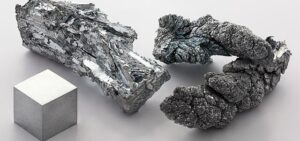
Ukraine currently imports electricity from Europe around the clock at a maximum capacity of 1.6 GW during peak hours, which does not cover the maximum allowable import capacity due to grid restrictions.
This was announced by Anatoliy Zamulko, acting head of the State Energy Supervision Inspectorate of Ukraine (Derzhenergonadzor), on Thursday during the “Yedyni Novyny” telethon.
“The peak part of imports, depending on the situation, is 1.5-1.6 thousand MW, which is not yet the limit allowed to us by contracts with Europe. The only problem that remains today is network restrictions to push that electricity to eastern Ukraine,” he said.
As reported, the maximum agreed commercial capacity for imports from the EU from December 2024 is 2.1 GW. On average, in November 2025, the utilization of transmission capacity was 27.4%, but during peak evening consumption hours, it increases significantly.
“If we had the opportunity to restore that network infrastructure more quickly, we would certainly have much better opportunities to provide energy through imports,” said the head of the State Energy Regulatory Commission.
As he explained, with the current drop in temperature and the onset of frost in Ukraine, there has been an increase in energy consumption. To balance the energy system, transmission system operators (TSOs, regional power companies) together with regional military administrations are freeing up additional capacity for consumers by including facilities that were not previously subject to disconnection in consumption restriction schedules.
“We are fighting to mitigate the drop in temperature in various ways, including one of the effective tools that will be used throughout Ukraine, which is to take into account the facilities that are to be included in the schedules and increase the fairness that is being talked about in terms of distribution,” Zamulko said.
He stressed that the Ukrainian energy sector continues to function as a single entity.
“We remain a unified energy system, working in parallel with Europe, carrying out all transfers in accordance with the agreements reached with our partners, using import capacities and, if necessary, using emergency assistance,” said the head of the State Energy Regulatory Commission.

Ukraine imports record amounts of electricity from the EU, but millions of consumers still sit without electricity for 12-16 hours or more. In other words, there are imports, but no electricity. This raises a logical question: where are the megawatts “lost”?
However, the paradox is easily explained: imports are not “light in the socket,” but only an additional source of power. For electricity to reach a particular neighborhood or building, highways, substations, and distribution networks must be operational—and that is where the biggest problems lie today.
The issue is further exacerbated by the fact that after large-scale shelling in early December, the capacity of nuclear power plants (which are the base generation of the Ukrainian power system) was reduced. According to the IAEA, damage to the networks led to the shutdown of some units or their transfer to reduced capacity. Therefore, the topic of imports has been discussed very actively at all levels recently.
November already showed a systemic gap. Electricity exports fell by 94% compared to October 2025, to 5.3 thousand MWh, and have virtually stopped since November 11. Recall that in October, Ukrainian electricity exports fell by 85% compared to September. Imports, on the contrary, increased by 17% to approximately 415,000 MWh, reaching their highest level since the beginning of the year.
Data for December is not yet available, but it is already clear that Ukraine remains a net importer of electricity for the second month in a row. The structure of supplies has changed somewhat: as in October, Hungary is the largest supplier (about 44%), but the shares of Slovakia (10 times) and Moldova (2 times) have increased significantly. At the same time, Poland and Romania have declined in the structure of electricity imports.
On December 1, the maximum available import cross-section was increased from 2.1 to 2.3 GW, but it should be noted that both figures are still more theoretical. After all, the average actual use of the cross-section in November was only about 27%, with peaks of up to 88% at certain hours.
In other words, the resource is there, but not always where and when it is needed. There are several main reasons why even the available electricity does not reach the end consumer.
The market responds to shortages with prices. In November 2025, the Ukrainian day-ahead market became one of the most expensive in Europe (with a price of around €140 per MWh), while in Sweden the price was around €36/MWh and in France, for example, €43/MWh.
This is not about the “greed” of sellers and suppliers, but about the lack of cheap domestic supply and network constraints.
The EU is increasing inter-state flows, which lowers prices and adds flexibility. In 2024, France increased its nuclear and hydroelectric power generation and became the largest net exporter in the region.
But even France’s record surplus is not an automatic “magic bullet” for Ukraine. The reason is asymmetry of time and place: surpluses often occur at times when we have a different load profile, and at nodes from which we cannot quickly “pump” megawatts.
Some EU countries also have electricity surpluses, especially during so-called solar and wind windows, and are also looking for places to sell their surpluses. But the same problems arise: complex logistics (both in the EU and in Ukraine) and load asymmetry.
In other words, imports can be very useful, but they should not be seen as a strategy to replace our own maneuverable capacity.
However, the current situation is not hopeless. Ukrenergo expects a gradual reduction in restrictions as damaged facilities are repaired and there are no new attacks.
The government is synchronizing restoration, construction of protective structures, creation of fuel reserves, and connection of cogeneration plants to the grid. This will add local capacity where it is most needed.
The effect of increasing the cross-section to 2.3 GW is there, but it is limited by internal nodes. The closest practical relief will come from connecting decentralized sources and restoring networks.
In the coming weeks, the focus will be on speed and accuracy. First of all, it is necessary to restore throughput capacity in critical corridors and key substations, where a single replacement of a transformer or circuit breaker returns tens of megawatts to the city.
Mobile substations, field crews, and “hot” equipment logistics are a matter of hours and days, not months.
At the same time, cogeneration, gas piston, and gas turbine units need to be connected to the grid in deficient nodes. Where “black holes” of evening peak demand appear on the map, local generation can “pick up” the load.
In the next few months, the transition to managed demand will become key. Industry and large commercial consumers are able to “smooth out” the load according to clear rules and compensation. This is not an abstraction: power restriction schedules (PRS) are already in place, but they need to be transformed into civilized DR (demand response) programs with a predictable effect.
It is also necessary to continue creating additional “west-east” corridors, additional switching nodes in the 330-750 kV network, and local reserves around megacities and large substations. Energy storage devices in large nodes support the system during 2-3 peak hours and reduce the duration of GPP.
In the long term, more game-changing capacity is needed. We need 3.5-4 GW of new decentralized maneuverable generation, as close to the consumer as possible. Gas installations, cogeneration clusters for heat and electricity, microgrids for critical areas — all this makes the system less dependent on one or two nodes.
Engineering logic must go hand in hand with institutional logic: transparent corporate governance, stable settlement rules, and rapid procurement of critical equipment. Without trust, there will be no funding; without funding, there will be no underground distribution points, reinforced intersections, or warehouses with backup transformers.
Don’t expect a magic button that will turn off the GPV overnight. A realistic scenario is a gradual reduction in the duration and severity of outages in regions where:
– at least part of the west-east trunk lines have been restored;
– local cogeneration/gas plants are connected;
– demand management programs for businesses are in place;
– critical infrastructure is provided with reserves.
This is a “mosaic of solutions”: each piece separately does not save the day, but together they have a tangible effect.
Imports with a potential of 2.3 GW may be a temporary salvation, but by no means a panacea. As long as high-voltage lines and power transmission nodes remain damaged, imported megawatts will not turn into light in homes.
The path to shorter outages lies in three quick actions:
At the same time, it is necessary to invest in our own maneuvering capacity and the development of central and local networks. Record imports are a symptom of an open wound. It is treated not with intersection figures, but with systematic rehabilitation of networks and a return of trust in the rules of the game.
Source: https://expertsclub.eu/analiz-potochnoyi-sytuacziyi-z-importom-elektroenergiyi-v-ukrayini/

In January-November 2025, Ukraine imported 44.18 thousand tons of coffee and 10.21 thousand tons of tea, which is 0.6% and 13.3% less than in the same period of 2024, according to the State Customs Service.
According to published statistics, in monetary terms, coffee imports increased by 39.2% to $352.18 million compared to $252.97 million for the same period a year earlier.
The main suppliers of coffee to Ukraine in the first 11 months of this year were Poland, which accounted for 15.5% of imports, or $54.67 million in monetary terms, Germany – 13.1% and $46.24 million, and Italy – 11.9% and $41.86 million.
A year earlier, the top three coffee suppliers to Ukraine for the corresponding period remained unchanged, except for their share in supplies: Poland (16.2%, $41.07 million), Italy (15.3%, $38.63 million), and Germany (13.1%, $33.09 million).
Tea imports during January-November 2025 decreased by 11.9% in monetary terms, to $38.92 million, compared to $44.19 million last year.
At the same time, the top three tea suppliers to Ukraine for the first 11 months of this year remained unchanged: Sri Lanka (30.3% or $11.8 million), Kenya (17.6% or $6.86 million), and China (12.5% or $4.85 million). Last year, these countries accounted for 31.6%, 20.1%, and 10.8% of the market, with tea supplies to Ukraine bringing them $13.96 million, $8.87 million, and $4.791 million, respectively.

The volume of passenger car imports to Ukraine, including cargo-passenger vans and racing cars (UKT ZED code 8703), exceeded $5.48 billion in January-November 2025, which is 37.2% more than in the same period of 2024 (almost $4 billion) and a quarter more than in the whole of 2024.
According to statistics released by the State Customs Service of Ukraine, the growth rate of passenger car imports has thus accelerated, reaching 33% in the first ten months of the year compared to the same period in 2024.
In particular, in November this year, passenger cars worth $663.3 million were imported into Ukraine, which is 84% more than in November last year.
The top three suppliers of cars to Ukraine in the first 11 months of this year were the US, Germany, and China, while last year they were the US, Germany, and Japan.
In particular, car deliveries from the US increased by 28% to $940 million, and their share in the structure of car imports was 17.4% compared to 18.4% a year earlier.
Cars worth $933.8 million (53.4% more) were imported from Germany to Ukraine, and almost $870 million (15.9% of passenger car imports) from China. Last year, imports from Japan, which was among the top three leaders, amounted to $482.8 million (11.6%).
Imports of passenger cars from other countries during the period amounted to $2.74 billion, compared to $2.19 billion in January-November 2024.
At the same time, in the first 11 months of this year, Ukraine exported only $7.23 million worth of such vehicles, in particular to the UAE, Canada, and the US, while a year ago, during the same period, the country supplied $9.5 million worth of such vehicles to foreign markets, mainly to Canada, Germany, and the US.
According to the State Customs Service, passenger cars accounted for 7.27% of the total structure of imports to Ukraine in January-November 2025 and 0.02% of the export structure.
As reported, in 2024, passenger cars worth $4.385 billion were imported into Ukraine, which is 8% more than a year earlier, and $10.1 million worth were exported (2.7 times less).

Imports of electric telephone or telegraph apparatus and videophones (HS 8517) to Ukraine in January-November increased by 27.6% compared to the same period in 2024, reaching $1.436 billion, according to statistics from the State Customs Service.
According to statistics, the largest volume of these products was imported from China (55.4%, or $795.7 million), Vietnam (15.3%, $220 million), and the United States (8.2%, $117.9 million). Last year, it was also China (64%, $720.6 million), Vietnam (16.3%, $183.6 million), and the United States (4.3%, $48.2 million).
In November this year, Ukraine imported telephone and telegraph equipment worth $159.8 million, which is 33.6% more than a year ago.
At the same time, exports of these products from Ukraine in January-November 2025 amounted to $111.2 million, which is 32.2% more than in the first 11 months of last year. Supplies were mainly to Hungary (70.2%), Poland (23.9%), and the Netherlands (less than 1%). During the same period in 2024, products were exported mainly to the same countries, but Hungary’s share was 63.4%, Poland’s was 27.8%, and the Netherlands’ was 3.6%.
According to the State Customs Service, in 2024, telephone or telegraph apparatus and videophones worth almost $1.26 billion were imported into Ukraine, which is 10% more than in 2023.

Imports of zinc and zinc products in January-November 2025 fell by 11.3% to $48.590 million. In November, imports amounted to $3.070 million.
Zinc exports for the 11 months of 2025 reached $1.166 million, in November — $22 thousand, while in January-November 2024 it was $463 thousand.
In 2024, imports of zinc and zinc products increased by 27.5% to $58.610 million, while exports amounted to $563 thousand.
In 2023, the country increased imports of zinc and zinc products to $45.966 million (+18.8%), while exports fell to $130,000 compared to $1.331 million in 2022.
Pure metallic zinc is used to recover precious metals, protect steel from corrosion, and for other purposes.